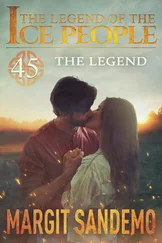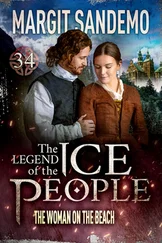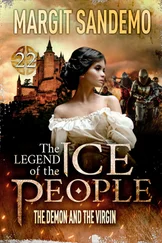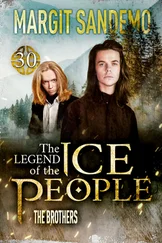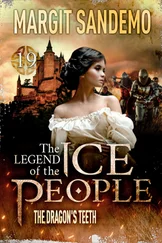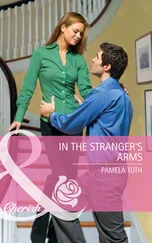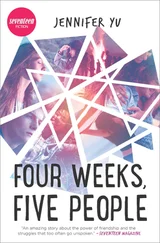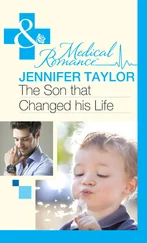Jennifer Toth - The Mole People
Здесь есть возможность читать онлайн «Jennifer Toth - The Mole People» весь текст электронной книги совершенно бесплатно (целиком полную версию без сокращений). В некоторых случаях можно слушать аудио, скачать через торрент в формате fb2 и присутствует краткое содержание. Город: Chicago, Год выпуска: 1993, ISBN: 1993, Издательство: Chicago Review Press, Жанр: Публицистика, на английском языке. Описание произведения, (предисловие) а так же отзывы посетителей доступны на портале библиотеки ЛибКат.
- Название:The Mole People
- Автор:
- Издательство:Chicago Review Press
- Жанр:
- Год:1993
- Город:Chicago
- ISBN:978-1-55652-241-3
- Рейтинг книги:4 / 5. Голосов: 1
-
Избранное:Добавить в избранное
- Отзывы:
-
Ваша оценка:
- 80
- 1
- 2
- 3
- 4
- 5
The Mole People: краткое содержание, описание и аннотация
Предлагаем к чтению аннотацию, описание, краткое содержание или предисловие (зависит от того, что написал сам автор книги «The Mole People»). Если вы не нашли необходимую информацию о книге — напишите в комментариях, мы постараемся отыскать её.
The Mole People — читать онлайн бесплатно полную книгу (весь текст) целиком
Ниже представлен текст книги, разбитый по страницам. Система сохранения места последней прочитанной страницы, позволяет с удобством читать онлайн бесплатно книгу «The Mole People», без необходимости каждый раз заново искать на чём Вы остановились. Поставьте закладку, и сможете в любой момент перейти на страницу, на которой закончили чтение.
Интервал:
Закладка:
“But he knows the tunnels better than most, and he’ll tell you stories. I doubt you’ll be able to verify many of them, but I vouch for him because I know people down here, those who lie and those who don’t,” Sam says.
I find Jamall sitting on a crate watching the scene in Times Square with a couple of drinking “associates.” He stands out in the signature green knit cap he wears even on hot days. It’s well before noon and his friends are well on their way to being drunk.
“You ain’t going to rob us are you?” one of them asks. “You white girls are dangerous in this neighborhood,” he laughs, a gold tooth flashing.
We chat for a while until Jamall stands, ready for the promised cup of coffee. He’s fully sober, not a hint of whiskey on his breath. “I try not to start drinking until the afternoon,” he explains.
His personal story, like so many other homeless men I know, centers on his mother.
“I was maybe eight and my mama brought us up north to get away from Alabama and the bigotry. My papa disappeared from the farm in 1962,” when the civil rights marches were breaking segregation barriers. “They say the KKK got him, but they never found his body.”
Jamall’s mother came to New York first. “My mama was a beauty and she had the voice. She used to talk about having a shot at the Apollo Theatre [in Harlem] and she left to become a star,” he smiles sadly. After a year she returned, told her family she was a secretary, and brought Jamall and his older sister to New York. “We loved New York before we even see it,” he remembers. “It was a freeman’s land. Everyone was supposed to be free and equal under the law. Course it wasn’t like that.”
His mama was not a secretary either. “I remember coming home from school one day and I was crying. Mama asked what was wrong. Kids told me she was a hooker, I said, and she got mad and slapped me. She weren’t no hooker or no prostitute, she said, she was a call girl. Then she slapped me and said I was too old to cry. That’s when she started drinking.”
Yes, he says with lowered head, he still feels responsible for his mother’s drinking.
Soon his mother began bringing men home and his sister, then fifteen years old and “almost as pretty as my mama,” decided to run away. “The last time I saw her, she was standing at the fire escape window with a pillow case of clothes, begging me to come with her. I told her I had to stay and take care of Mama,” he says.
For all her problems, Jamall’s mother insisted that he finish high school. He worked at odd jobs, never getting into trouble. He never took any money from her hands, he says. “I told her it was dirty money,” he tells me, “and that made her drink more.”
Jamall enlisted in the army, where he learned to drink, he says. When he was discharged, he got into drugs. “No, I don’t do drugs anymore—unless you got some,” he smiles eagerly. “I don’t have the money for it anymore.”
On the promise of a job if he broke the drug habit, an army friend got him a job as a garbage collector, but, with the money, he went back to drugs. He met a girl who sent him to rehab. “We did great, best time in my life. I took good care of her and my mother. Thing was,” he laughs, “she looked better when I was stoned than when I was sober.” He got fired, reentered rehab a fourth time, and landed a post office job. He got married and had two children, whom he refuses to discuss.
“And I started drugging again. My woman wanted no part of me. This time I landed on the street,” living in cardboard boxes on the streets. “I was tired and I just wanted peace, but I didn’t want to be on the streets where my kids’ friends would see me and make fun of them. That’s why I went into the tunnels.”
There he met Cher, who was six years his elder. “The first thing she told me was she was dying,” he remembers. “I didn’t believe her because she didn’t look that bad. I mean she looked like she’d been on the streets, a bit beaten up, but she didn’t look like dying.”
They spent two years together. “At first it was for company,” he says. “She didn’t bug me about my habits and I didn’t bug her. But she was a lady,” he adds quickly. “She didn’t do drugs or nothing. Drank some, when the pain got bad. We didn’t plan to stay together, just worked out that way. She was like a mother, a sister, a friend, and then a girlfriend. I stopped doing drugs and laid low on the drink because she needed me. She’d make me go get baths and she’d sew my clothes. She didn’t ask about my past, but I told her anyway. She didn’t say anything, but last year she bought a Christmas card for me to send to my kids. I wouldn’t. They’re better off thinking I’m dead, I told her. They should know you love them, she said. I told her I’d kill myself before I signed that card. That was the only fight we ever had,” Jamall says.
Cher never told him about her illness. She coughed a lot toward the end, and he tried to get her into a hospital against her wishes.
“She said she didn’t want to die ignored,” he says. “The hospitals, see, when you’re on the street, they make you feel like dirt. But a couple of times she was so weak I carried her, and she cried all the way. When they weren’t looking, she’d sneak back. Even if they were nice to her, and some were, she wouldn’t have stayed. So she died with me, the way she wanted. I think she even picked the day.”
“You’re gonna ask, but I ain’t going to tell you Cher’s story. That’s her’s to keep in her grave. All I’ll say is she was a good person. She thought she was bad, but she was the best I ever known.”
Drink keeps him immune from pain, he says. If the cost of drink is dying, he’ll take the drink. He doesn’t care whether he’s believed or not about his life or anything else.
“When I walk them tunnels, I see things no one would believe,” he says. “I even met the devil down there. He got these fiery eyes, baby, you wouldn’t believe! He couldn’t get me, though, cuz Cher looks out for me.”
He’s visited the Dark Angel’s den, Jamall says, but more frightening is “Ghost’s Cliff,” which he found at the end of a natural tunnel, or a cave that opens midway up a sheer cliff. The cliff overlooks a river far below, he says, presumably the Harlem River on the Upper West Side.
Homeless people, according to him, make their homes in the cliffs. “They’re like little birds,” he says. “You can hardly see them. They don’t talk to each other with words. They use noise that sound like birds or maybe the wind.” He lets out a hollow screech to mimic the sounds he heard.
“It’s a weird place,” he adds, with tales of human sacrifice and cannibalism. “I didn’t hang around long enough to find out.”
Whether Jamall’s birdlike people are real, natural caves are likely to run through the Manhattan bedrock of schist. Geologists describe schist as crystalline rocklike granite that has a folded structure and cleaves along parallel planes or slabs like the layers of mica. The shifting earth leaves gaps between slabs, which rain and spring water widen into huge caverns. The schist almost reaches the surface under the grass of Central Park before dropping a hundred feet or more below the surface elsewhere on Manhattan. Workers digging the subway tunnels early in this century are said to have found a ten-thousand-year-old standing forest buried deep under the Upper West Side, presumably inundated in a mud slide and driven into a cavern by an Ice Age glacier.
More plausible than Ghost Cliff is the huge underground room “with a piano and tiled floor and mirrors all around” that Jamall says he found. An elderly homeless woman later described to me a similar room in which about fifty homeless people live. She added a fountain to the decor. “Fantastic,” she said. “It was just beautiful.” The two compartments could be the same, although Jamall and the woman placed them in different regions of the city, one in lower Manhattan and the other in Mid-Town on the West Side. These rooms are probably remnants of compartments dug and drilled out more than a century ago as part of the subway and rail systems and long abandoned and forgotten.
Читать дальшеИнтервал:
Закладка:
Похожие книги на «The Mole People»
Представляем Вашему вниманию похожие книги на «The Mole People» списком для выбора. Мы отобрали схожую по названию и смыслу литературу в надежде предоставить читателям больше вариантов отыскать новые, интересные, ещё непрочитанные произведения.
Обсуждение, отзывы о книге «The Mole People» и просто собственные мнения читателей. Оставьте ваши комментарии, напишите, что Вы думаете о произведении, его смысле или главных героях. Укажите что конкретно понравилось, а что нет, и почему Вы так считаете.



